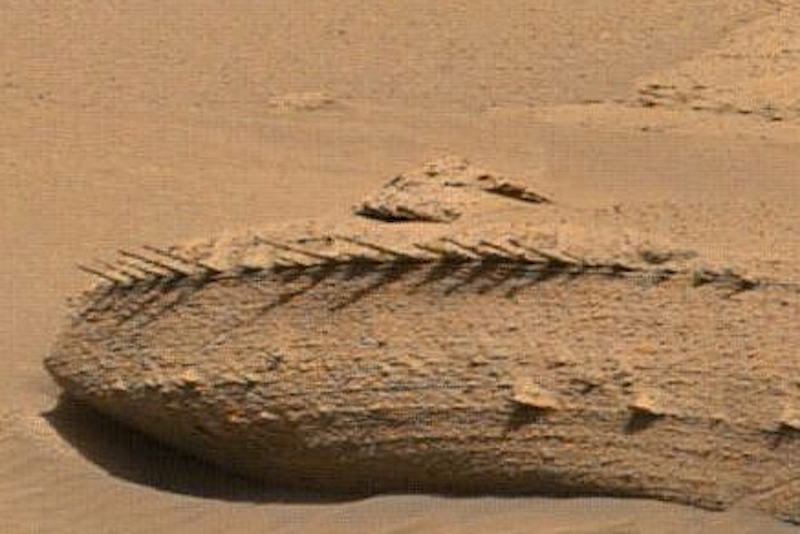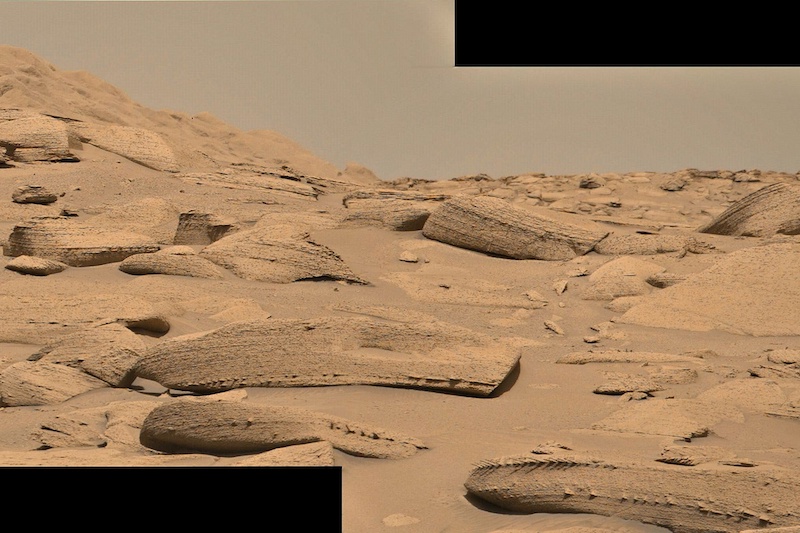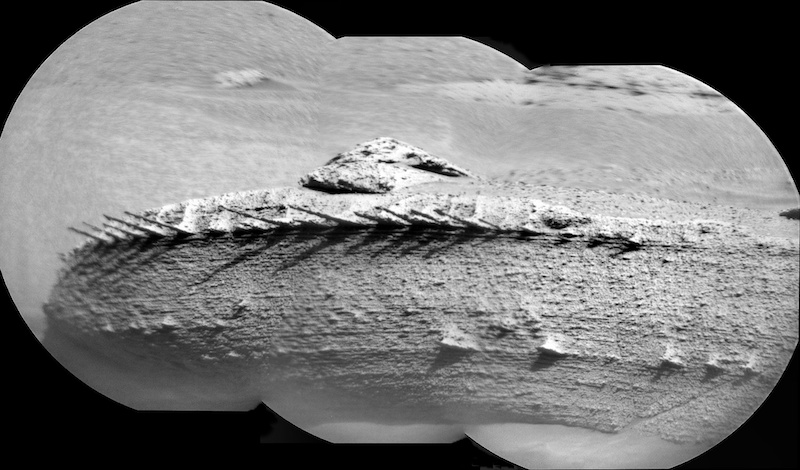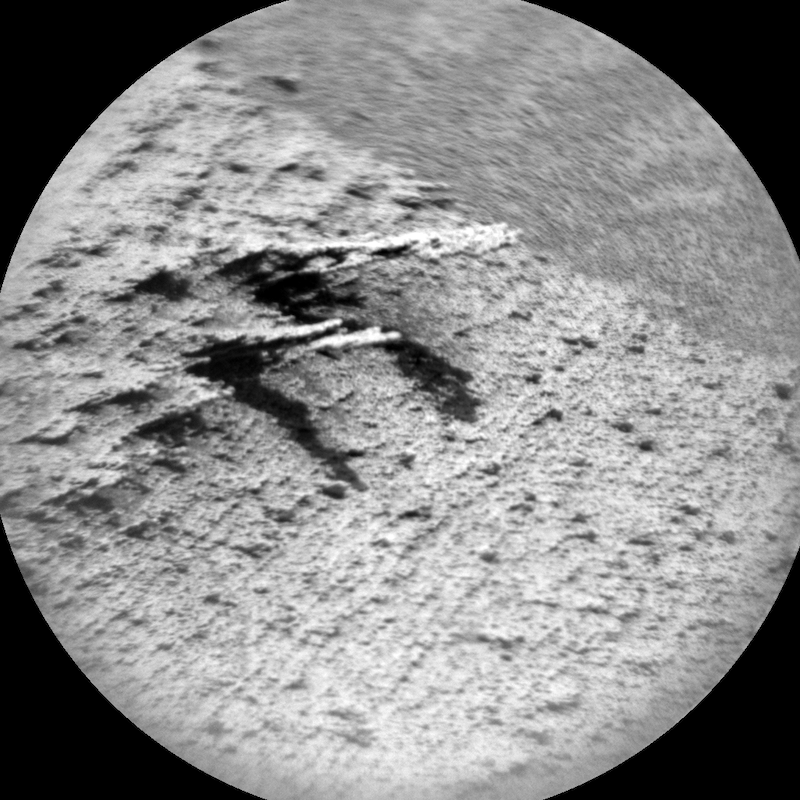
Dragon bones on Mars?
Our robotic Martian explorers have shown us plenty of strange rock formations of Mars. The thin Martian atmosphere and lower gravity can produce odd rocky structures that look like everything from mini-hoodoos to flowers to doorways. On April 1, 2023 (Sol 3786), NASA’s Curiosity rover came across some of the weirdest-looking rock formations yet. These rock slabs have rows of more or less equally spaced “spikes” sticking out of them. They kind of look like fossilized spines. In fact, some are playfully calling them dragon bones.
Curiosity is currently at the head of the Gediz Vallis channel on Mount Sharp. The scenery in this region is stunning. As well as the unusual rocks, Curiosity has been exploring and studying the channel, mesas and buttes on these lower slopes of the mountain.
Curiosity rover finds odd spiky rocks
The unusual spikes were discussed in a post on the Facebook page ‘Mars Rovers: Mosaics, Panoramas & Updates’. In addition, the images were also posted on Twitter and Reddit, generating some spirited discussions.
In 20 years of studying Mars, that's the most bizarre rock I have ever seen. I cannot wait to have a microscopic image of this one…It is part of a Gigapan of Gale crater that you can see here: https://t.co/LxljtDHyIl pic.twitter.com/wHhn1ckqjL
— Nathalie A. Cabrol (@shasta721) April 10, 2023
The spikes pictured above are the most prominent ones, although there are more on nearby rock slabs as well. All of them appear to follow the fine stratification layers in the sedimentary slabs. Many seem to be fairly regularly spaced along horizontal rows. Are these clues to their origins? The features first showed up a few days ago in MastCam images from Sol 3786 (the rover’s day 3,786 of the mission in Martian time). Since then, the rover’s ChemCam camera has taken some closer images, although in black and white.
How did these spine-like features form?
So, how did they form?

As of now, the Curiosity science team hasn’t commented on them yet. But, of course, that hasn’t stopped people from speculating. The current consensus seems to lean toward wind erosion, the same as for other peculiar formations seen previously. As john_s suggested in the online forum Unmannedspaceflight.com:
I’ll throw out one hypothesis for these spikes: parallel ripples in the sediments, with coarser or better-cemented grains accumulating in the troughs of the ripples. That could result in regularly spaced parallel linear features in the sediment that are more wind-resistant. Add wind erosion roughly parallel to those features, so they protect themselves as the rest of the surface recedes, and you might get something like this. Or not.


See all the ‘dragon bones’ in new GigaPan
You can view all of the spiky rocks in this GigaPan by Neville Thompson. Zoom in and see what else you can find!
You can also see all of Curiosity’s raw images here. (More than 550,000 to date!)
Bottom line: Did NASA’s Curiosity rover find dragon bones on Mars? Nah. But these wonderfully weird spiky rocks are some of the strangest formations the rovers have seen so far.











